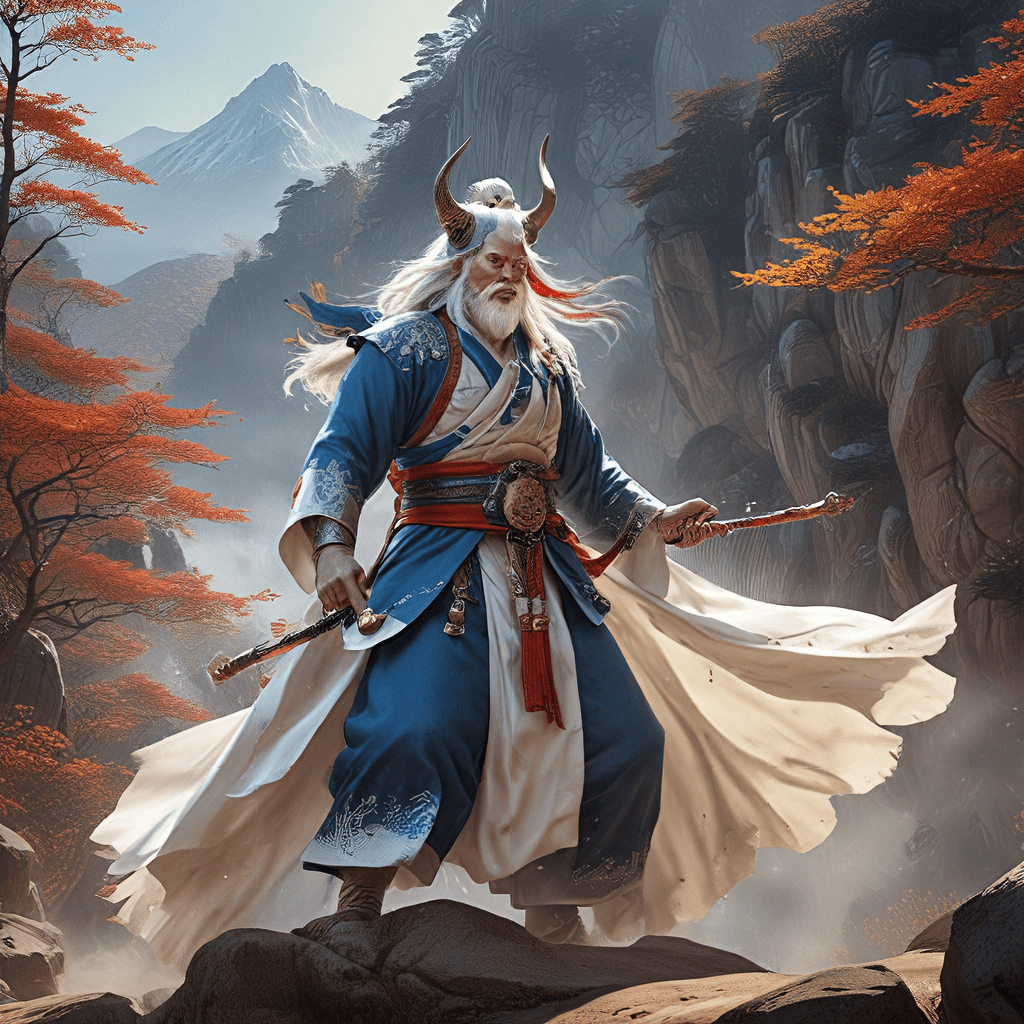The Mountain of the Forgotten Gods: Myths of Deities Lost to History
Introduction: The Allure of Forgotten Mythologies
Myths have always been a fundamental aspect of human culture, serving as a bridge between the divine and the terrestrial. They encapsulate the beliefs, fears, and aspirations of societies, providing insight into their values and traditions. Among these rich tapestries of narrative is the concept of “The Mountain of the Forgotten Gods,” which symbolizes the vast array of deities that have slipped into obscurity over the ages.
This exploration into lost deities is not merely an academic endeavor; it is an invitation to rediscover the relevance of these figures in our contemporary lives. By examining the myths surrounding them, we can uncover lessons and insights that resonate with modern experiences.
The Cultural Significance of Mountains in Mythology
Mountains have long been revered as sacred spaces, often serving as the dwelling places for gods and goddesses across various cultures. They symbolize strength, permanence, and the connection between heaven and earth. This section delves into the cultural significance of mountains in mythology.
- Symbolism: Mountains are often seen as the abode of the divine, representing a link between the mortal realm and the cosmos.
- Spiritual Practices: Many ancient peoples performed rituals on mountains, believing these locations were closer to the gods.
- Famous Mythological Mountains:
- Mount Olympus in Greece – Home of the Greek gods.
- Mount Meru in Hindu and Buddhist cosmology – The center of all physical, metaphysical, and spiritual universes.
- Mount Fuji in Japan – A sacred symbol in Shinto beliefs.
Unearthing the Forgotten: Archaeological Discoveries
Archaeology plays a crucial role in reviving lost deities and their associated myths. By unearthing ancient sites, researchers can piece together the fragments of forgotten religions and their practices.
Key archaeological discoveries include:
- The Nazca Lines in Peru: These geoglyphs reveal the spiritual connection the Nazca culture had with their gods.
- The Indus Valley Civilization: Sites like Mohenjo-Daro showcase the remnants of a complex society with its pantheon of deities.
- The Göbekli Tepe in Turkey: This ancient temple complex suggests early human worship practices that may point to lost gods.
These discoveries not only reshape our understanding of ancient religions but also highlight the importance of archaeology in reviving forgotten myths.
The Deities of the Mountain: A Survey of Lost Gods
In this section, we explore some of the notable forgotten gods and goddesses that once held significance in their respective cultures.
- Hecate: Once a powerful goddess of magic and witchcraft in ancient Greece, her worship declined with the rise of Christianity.
- Freyja: A Norse goddess associated with love and fertility, Freyja’s veneration diminished as Viking culture transformed.
- Quetzalcoatl: The feathered serpent god of Mesoamerica, whose worship faded with the advent of Spanish colonization.
Each of these deities has a unique story, attributes, and cultural significance, reflecting the reasons for their decline in worship.
The Role of Oral Tradition in Preserving Mythology
Oral storytelling has been instrumental in preserving the memory of lost deities. Even as civilizations evolve, the stories of these gods persist through generations, often morphing in response to cultural shifts.
However, the impact of globalization and modernity poses challenges to these traditions:
- Oral traditions risk being overshadowed by digital media.
- Global interconnectedness can dilute local mythologies.
Nevertheless, some myths continue to thrive, reminding us of their enduring nature. For example:
- The tale of Anansi the Spider from West African folklore.
- The legends of the Native American Trickster figures.
The Influence of Forgotten Gods on Modern Culture
The echoes of forgotten deities resonate in contemporary literature, art, and media. These ancient myths inspire modern adaptations and creative expressions, breathing new life into these lost narratives.
Case studies include:
- Literature: Neil Gaiman’s “American Gods” explores the clash of old and new deities.
- Art: Artists like Frida Kahlo drew upon indigenous mythology, infusing their work with ancient themes.
- Film: Movies such as “Clash of the Titans” reimagine Greek myths for modern audiences.
This resurgence of interest in forgotten belief systems highlights the timeless nature of these narratives.
Comparative Analysis: Forgotten Gods Across Cultures
A comparative analysis reveals both similarities and differences between deities from various regions. Many cultures feature gods who embody similar archetypes, albeit under different names and forms.
Key thematic connections include:
- Creation myths that explain the origins of the world.
- Deities associated with fertility, harvest, and nature.
- Trickster figures that challenge norms and societal structures.
This universality speaks to shared human experiences and the psychological need for storytelling.
The Psychology of Belief in Forgotten Deities
Understanding why societies forget or abandon certain gods involves delving into the psychology of belief. Societal changes, such as technological advancement and shifts in moral values, often lead to the decline of certain deities.
People have a psychological need for deities and spiritual beings, which fulfills various roles:
- Providing comfort in times of uncertainty.
- Explaining the unexplainable aspects of life.
The evolution of belief systems often reflects broader societal transformations, influencing which deities are remembered and which are lost.
Resurrecting the Forgotten: Modern Movements and Revivals
In recent years, there has been a resurgence of interest in lost mythologies, driven by contemporary movements seeking to revive these ancient beliefs.
Neo-paganism and reconstructionist practices play significant roles in this revival:
- Communities are embracing ancient rituals and ceremonies.
- Individuals are exploring personal connections to forgotten deities.
Case studies include groups reconstructing Celtic and Norse traditions, highlighting a growing desire to reconnect with ancestral spiritualities.
Conclusion:
The exploration of “The Mountain of the Forgotten Gods” reveals not only the depth of human creativity and spirituality but also the enduring legacy of mythological narratives in modern society. As we uncover and revive these lost deities, we enrich our understanding of ourselves and the world around us. By embracing the stories of the past, we can forge connections that transcend time and culture, reminding us of the shared human experience woven throughout history.




